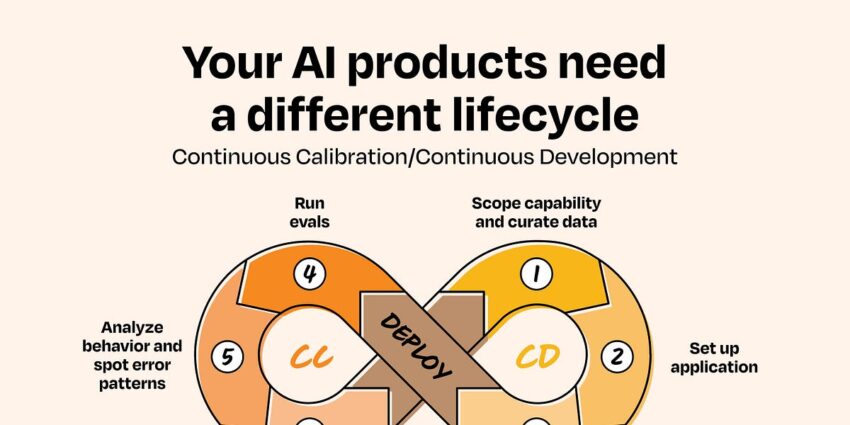TL;DR Summary of How to Build and Ship AI Products the Right Way with the CC/CD Framework
Optimixed’s Overview: Mastering AI Product Development with the Continuous Calibration Framework
Understanding the Unique Challenges of AI Products
Unlike traditional software, AI products behave unpredictably due to the nature of user inputs (open-ended prompts, voice commands) and the probabilistic outputs generated by models. This non-deterministic behavior means that AI systems cannot be developed or shipped with the same assumptions or methods as classic software.
Additionally, AI systems often act autonomously on behalf of users, creating a critical agency-control tradeoff: the more autonomy given, the less human control remains, increasing risks if the AI behaves unexpectedly.
The CC/CD Framework: A Structured Approach to AI Product Lifecycle
- Continuous Development (CD): Start by scoping features with high control and low agency, design simple architectures, and develop evaluation metrics (evals) to monitor AI behavior against expected outcomes.
- Continuous Calibration (CC): Deploy early versions to limited users, collect real-world interaction data, analyze failures, and iteratively refine the system. This loop earns the AI system increasing levels of autonomy while maintaining human oversight.
Key Steps to Implementing CC/CD Effectively
- Scope Capabilities Incrementally: Break down your end goal into manageable versions, each with more agency than the last—for example, routing support tickets, then suggesting solutions, then auto-resolving with fallback.
- Build and Use Reference Datasets: Gather initial examples to set baseline expectations and facilitate evaluation during development.
- Design Meaningful Evaluations: Create application-specific metrics to measure AI performance and identify areas for improvement.
- Deploy with Human Control Handoffs: Ensure users or operators can override AI actions seamlessly to maintain trust and recover from errors.
- Iterate Based on Real Data: Continuously analyze live data and error patterns to refine prompts, models, or system components.
Building Trust and Scaling AI Products Safely
The CC/CD framework encourages teams to treat AI systems like new teammates—starting small, observing behavior, earning trust, and expanding capabilities thoughtfully. This prevents costly mistakes that arise from rushing full autonomy and helps maintain user trust and system transparency.
Overall, by combining product judgment with structured iteration, CC/CD empowers product teams to navigate AI’s complexities and deliver reliable, effective AI-powered features and products.
